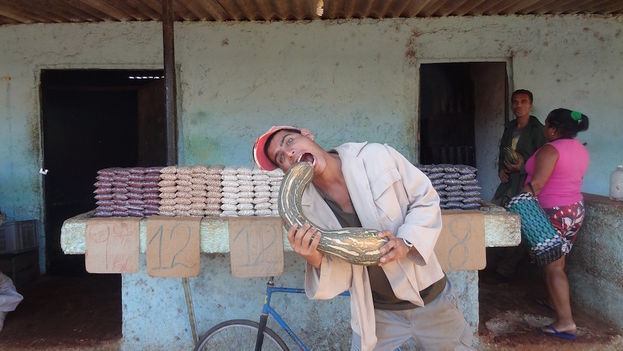
![]() 14ymedio, Generation Y, Yoani Sanchez, Havana, 4 January 2016 — I was ten years old when Fidel Castro launched the economic battle he called the “Rectification of errors and negative tendencies.” The Maximum Leader’s rage fell, at that time, on private farmers and on the intermediaries who marketed their products. Cuatro Caminos Plaza in Havana, then known as the Single Market, was assaulted by officials and after that raid several foods disappeared from our lives: onions, garbanzo beans, chili peppers and even taro.
14ymedio, Generation Y, Yoani Sanchez, Havana, 4 January 2016 — I was ten years old when Fidel Castro launched the economic battle he called the “Rectification of errors and negative tendencies.” The Maximum Leader’s rage fell, at that time, on private farmers and on the intermediaries who marketed their products. Cuatro Caminos Plaza in Havana, then known as the Single Market, was assaulted by officials and after that raid several foods disappeared from our lives: onions, garbanzo beans, chili peppers and even taro.
Almost a decade later, when the country had reached bottom with food shortages and scarcities, the government again authorized non-state food markets. The first time I approached a stand and bought a string of garlic, without having to practice stealth, I recovered a part of my life that had been snatched from me. For years we had to appeal to the illegal market, to a precarious clandestinity, to get things ranging from a pound of beans to the cumin seeds needed to season them.
However, the return of “farmers markets” has not been free of attacks and government animosity. The official press blames private producers for the high prices of many foods, and the figure of the intermediary has been demonized in the extreme. In the last 2015 session of the National Assembly, the idea was floated of imposing price regulation on certain food products, to force merchants to reduce the amounts.
At first glance, this would appear to favor consumers. Who wouldn’t consider it good news that a pound of pork without bones would not exceed 30 Cuban pesos, or never reach the astronomical 50 peso asking price in Havana’s Egido market at the end of 2015. The initial reaction of customers would be to welcome it, because a single lemon would no longer cost one Cuban peso, nor would papaya sell for 5 Cuban pesos a pound. However, behind the regulated prices come greater evils.
What could happen is that the products subjected to price controls would disappear from the agricultural markets and once again go into hiding. We would not be able to go to the corner to buy a pound of onions, like we have done over the last two decades, but would return to the times when we’d end up at the side of some road or in the middle of nowhere illegally dealing directly with the producers or the persecuted intermediaries.
Consumers would end up paying the piper for a measure that does not solve the problem of the lack of productivity on our farms or of the extremely low wages.
An economy is not planned on a whim, nor is it managed by force of restrictions, rather it is a fragile framework where lack of confidence and excessive state control are like a deadly embrace, leaving us without the ability to breathe on our own. In this grip, controlled prices come to be feared as the kiss of death that strangles commerce and leaves it lifeless.
